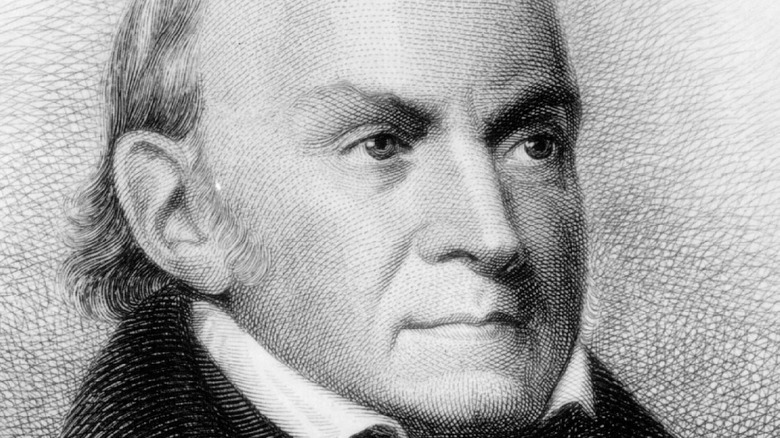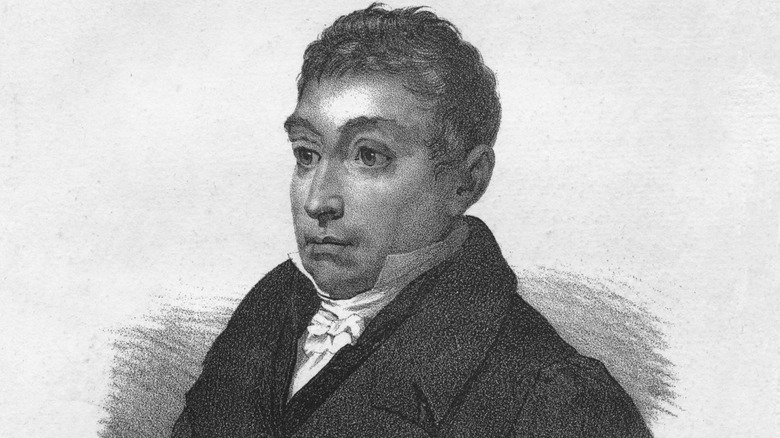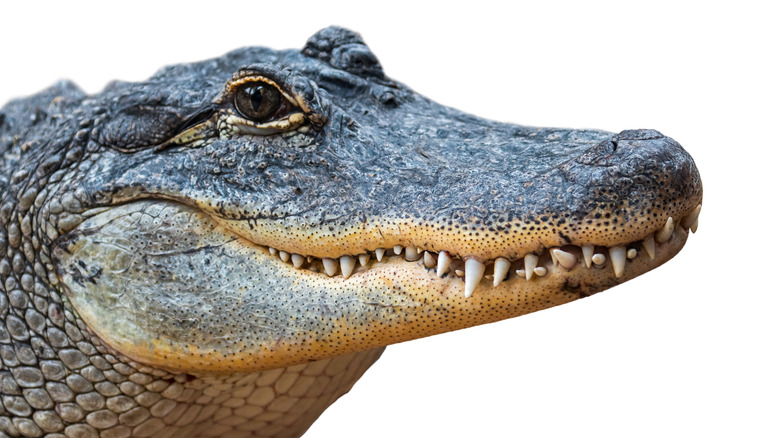Here's Why People Think John Quincy Adams Had A Pet Alligator
There is a slew of legends surrounding U.S. presidents, from George Washington chopping down a cherry tree as a child to more nefarious ones like Zachary Taylor being poisoned to death. But perhaps the strangest legend that persists is that John Quincy Adams kept a pet alligator — a gift from Revolutionary War hero the Marquis de Lafayette — with which he enjoyed scaring guests. This legend is so pervasive it has found its way into many books, and is rife on the internet, from social media posts to legit news sources like the Daily Herald and the Presidential Pet Museum website.
It all started, apparently, with a brief mention of the Marquis de Lafayette's visit to the White House in 1825. "When General Lafayette made his visit there, this famous East Room was given up to him to deposit the many curiosities sent him, some live alligators being among them," the author and suffragist Harriet Taylor Upton wrote in 1888 in her "The Household of John Quincy Adams." She repeated the story in a later book, "Our Early Presidents: Their Wives and Children." Where she got this information and how this brief remark snowballed into a tale of an alligator living in the White House remains a mystery.
General Lafayette comes for a visit
What we know for sure is that for more than a year, between August 1824 and September 1825, Marie-Joseph-Paul-Yves-Roch-Gilbert du Motier, Marquis de Lafayette (above), by then preferring to be known as General Lafayette, made a grand tour across the U.S. at the invitation of President James Monroe and Congress, per The White House Historical Association. Lafayette's extensive visit to the U.S. consolidated the young country's love of the Frenchman, perhaps best exemplified by the many counties, cities, and towns later named in his honor, according to Lafayette College, itself named after the war hero.
During the Revolution, Lafayette served in George Washington's staff beginning in 1777, fought and was wounded at the Battle of Brandywine, received his own division, and was later instrumental in convincing France to send troops and supplies to help fight the British, per Britannica. During his cross-country trip in 1824-1825, Lafayette visited the White House twice and spent time with both President James Monroe and his successor, John Quincy Adams. Lafayette's second visit to Washington, D.C. to meet Adams took place in the late summer of 1825, just before he sailed home on a ship provided by the U.S., per The White House Historical Association.
An intrepid podcaster sinks the gator story
Auguste Levasseur, who accompanied General Lafayette the entire trip, wrote a very detailed two-volume recounting of the journey, "Lafayette in America in 1824 and 1825," which included Lafayette's visit with President John Quincy Adams. Levasseur never mentioned Lafayette giving alligators to Adams, nor storing any alligators at the White House. Even so, the tale gained traction after Harriet Taylor Upton's turn-of-the-century remarks on Lafayette's alligators in the East Room.
If not for an intrepid writer and podcaster Howard Dorre, this alligator tale would have continued to be passed off as fact, rather than a legend. Dorre, on his Plodding Through the Presidents blog, did some digging, interviewed several historians, and determined that the alligator story was bunk. Perhaps Andrew Hager, the historian-in-residence for the Presidential Pet Museum, who Dorre clued in that their site had given the alligator legend credence, best sums it up in a post titled "Bitten by an Alligator": "At this time, the best I can say about John Quincy Adams' alligator is that it's a fun legend, like George Washington's cherry tree or Davy Crockett killing a b'ar when he was only three" (via the Presidential Pet Museum).


